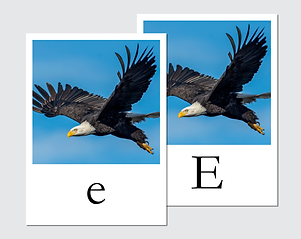top of page
How the cards work
Letters
Each card has a letter, lowercase on one side and uppercase on the other. The goal is to become proficient in identifying and saying the name of the letter presented on the card.
Pictures
Each card has a picture of something that requires you to say the letter on the card. For example, "A-pron" or "U-nicorn".
Reinforcement
The combination of the letters and the coordinating pictures assist to reinforce learning the names of the letters.
What's Included:
1. 69 double sided letter name cards with uppercase and lowercase letters.
2. A letter key for the words and picture examples used for each letter card.
3. 2 blank cards to cover up the pictures or to create your own card.
4. Instructions on how to use the cards.

Send us an email to order yours today!
If you need replacement instructions, please email us and we will send you a copy.
bottom of page

.png)